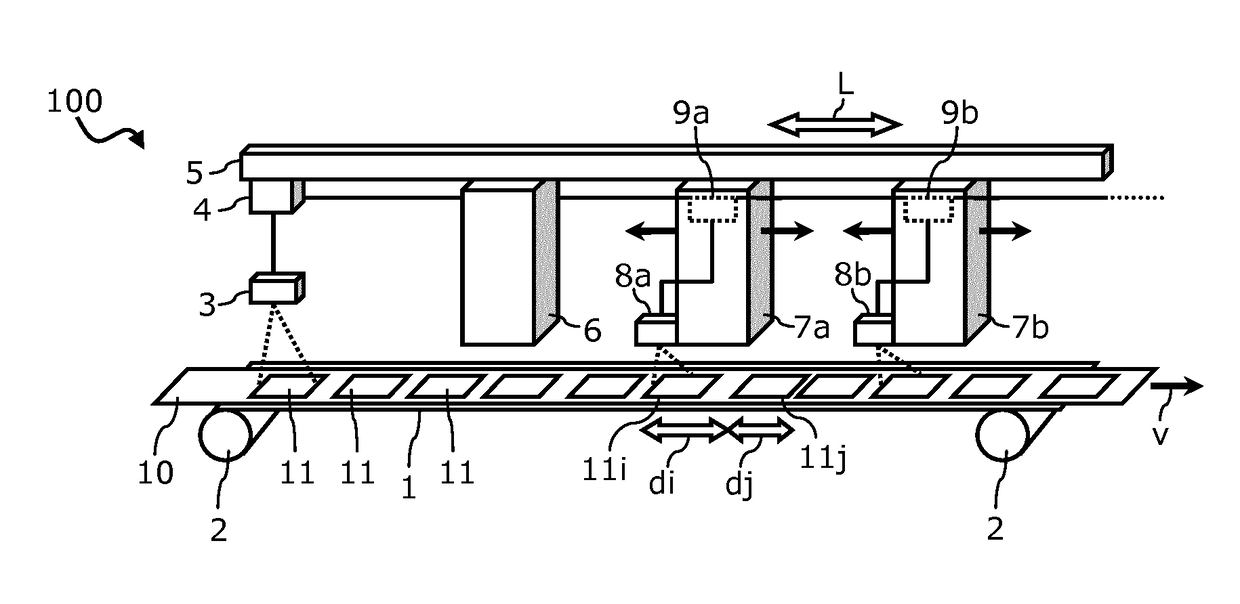Web processing system and method for processing a base web
a processing system and web technology, applied in the field of web processing system and a processing method, can solve the problems of missing threads, prone to manufacturing tolerances, and the inability to meet the requirements of textile substrates, and achieve the effect of reducing the distance between processing modules and different segments and saving production time and energy
- Summary
- Abstract
- Description
- Claims
- Application Information
AI Technical Summary
Benefits of technology
Problems solved by technology
Method used
Image
Examples
Embodiment Construction
[0028]FIG. 1 schematically illustrates a processing system 100. The processing system 100 may particularly be configured to process and produce RFID labels on a fabric or textile substrate. A conveyor device 1 is configured to feed a base web 10 along a predetermined conveyor path which is generally denoted with the reference numeral v in FIG. 1. The conveyor device 1 may in particular have roller means 2 that progressively advance the base web 10 which may be in endless or quasi-endless band or tape form in the direction v.
[0029]The base web 10 comprises a sequence of processing segments 11 that are formed on the web with the processing segments 11 being adjacent or bordering each other in the direction of the conveying path v. Each processing segment 11 forms an RFID label. As indicated in FIG. 1, the processing segments 11 may be spaced apart by various distances, depending on the quality of the weaving for a fabric base web and / or the stretch of the base web along the conveying ...
PUM
 Login to view more
Login to view more Abstract
Description
Claims
Application Information
 Login to view more
Login to view more - R&D Engineer
- R&D Manager
- IP Professional
- Industry Leading Data Capabilities
- Powerful AI technology
- Patent DNA Extraction
Browse by: Latest US Patents, China's latest patents, Technical Efficacy Thesaurus, Application Domain, Technology Topic.
© 2024 PatSnap. All rights reserved.Legal|Privacy policy|Modern Slavery Act Transparency Statement|Sitemap


